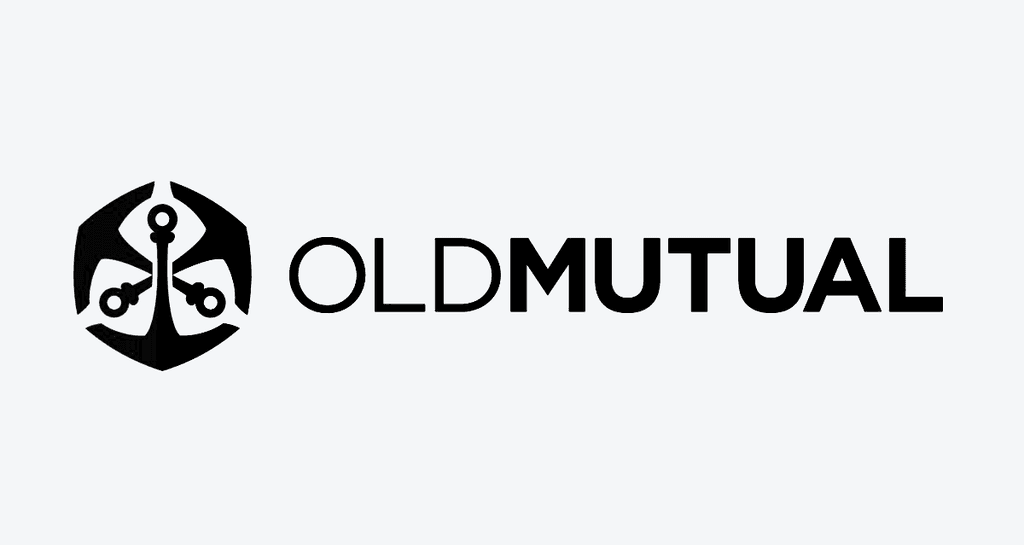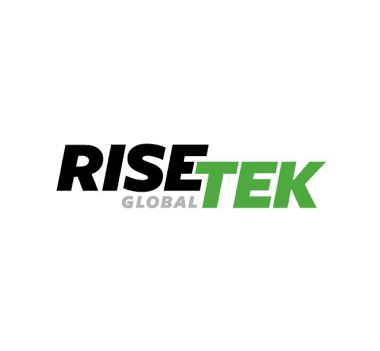ConnexAI named by Viva Tech: Top 10 Next Unicorns








Adaptable to any industry


Athena
Athena
The Global Leader in
The Global Leader in
The Global
Leader in
Explore an AI solution that seamlessly engages in conversation, automates support, and provides real-time insights to drive growth and enhance customer satisfaction.
Explore an AI solution that seamlessly engages in conversation, automates support, and provides real-time insights to drive growth and enhance customer satisfaction.
AI Products to Power Any Business
AI to Power Any Business
Discover ConnexAI's diverse range of AI products, designed to power any business.
Discover ConnexAI's diverse range of AI products, designed to power any business.
Discover ConnexAI's diverse range of AI products, designed to power any business.
ATHENA 2.0
ATHENA 2.0
AI Agent
Conversational AI-Driven Excellence

AI Analytics
AI Data-Driven Insights

AI Guru
Your Intelligent AI Co-Pilot

AI Voice
Power Your Brand with AI Voice

Automatic Speech Recognition
Never Miss a Word

AI Agent
Conversational AI-Driven Excellence

AI Analytics
AI Data-Driven Insights

AI Guru
Your Intelligent AI Co-Pilot

AI Voice
Power Your Brand with AI Voice

Automatic Speech Recognition
Never Miss a Word

AI Agent
Conversational AI-Driven Excellence

AI Analytics
AI Data-Driven Insights

AI Guru
Your Intelligent AI Co-Pilot

AI Voice
Power Your Brand with AI Voice

Automatic Speech Recognition
Never Miss a Word

AI Agent
Conversational AI-Driven Excellence

AI Analytics
AI Data-Driven Insights

AI Guru
Your Intelligent AI Co-Pilot

AI Voice
Power Your Brand with AI Voice

Automatic Speech Recognition
Never Miss a Word

AI Agent
Conversational AI-Driven Excellence

AI Guru
Your Intelligent AI Co-Pilot

AI Analytics
AI Data-Driven Insights

AI Voice
Power Your Brand with AI Voice

Automatic Speech Recognition
Never Miss a Word

AI Agent
Conversational AI-Driven Excellence

AI Guru
Your Intelligent AI Co-Pilot

AI Analytics
AI Data-Driven Insights

AI Voice
Power Your Brand with AI Voice

Automatic Speech Recognition
Never Miss a Word

AI Agent
Conversational AI-Driven Excellence

AI Guru
Your Intelligent AI Co-Pilot

AI Analytics
AI Data-Driven Insights

AI Voice
Power Your Brand with AI Voice

Automatic Speech Recognition
Never Miss a Word

AI Agent
Conversational AI-Driven Excellence

AI Guru
Your Intelligent AI Co-Pilot

AI Analytics
AI Data-Driven Insights

AI Voice
Power Your Brand with AI Voice

Automatic Speech Recognition
Never Miss a Word

























Chosen by Leading Global Brands
Explore excellent reviews from our vast portfolio of client success stories.

Mbusiswa Nyuswa
Chief Technology Officer
We’ve been using ConnexAI for just over five years now, and I’ve never been so happy. They are an amazing technology partner to work with.


Tim Murray
Director of IT
The onboarding and programming team were able to help us in a very short 2-week turnaround to go live, where in other cases with vendors it took us six months.


Justin Freeman
Chief Information Officer
If you're somebody that is looking for a complete AI cutting-edge solution I highly recommend ConnexAI.


Gayle Cathey
Director of Call Centre
The ConnexAI support team has been fabulous. It is honestly, out of all my vendors and anyone I've dealt with, the best one.


Ezequiel Negron
Director of IT
I would definitely recommend ConnexAI to other health care providers. I think it is a leading platform in this industry.


Leo Lopez
Chief Executive Officer
I think that ConnexAI offers an exceptional balance of investment, ease of use, support and capabilities for its price point.

Chosen by Leading Global Brands
Explore excellent reviews from our vast portfolio of client success stories.

Mbusiswa Nyuswa
Chief Technology Officer
We’ve been using ConnexAI for just over five years now, and I’ve never been so happy. They are an amazing technology partner to work with.


Tim Murray
Director of IT
The onboarding and programming team were able to help us in a very short 2-week turnaround to go live, where in other cases with vendors it took us six months.


Justin Freeman
Chief Information Officer
If you're somebody that is looking for a complete AI cutting-edge solution I highly recommend ConnexAI.


Gayle Cathey
Director of Call Centre
The ConnexAI support team has been fabulous. It is honestly, out of all my vendors and anyone I've dealt with, the best one.


Ezequiel Negron
Director of IT
I would definitely recommend ConnexAI to other health care providers. I think it is a leading platform in this industry.


Leo Lopez
Chief Executive Officer
I think that ConnexAI offers an exceptional balance of investment, ease of use, support and capabilities for its price point.

Chosen by Leading Global Brands
Explore excellent reviews from our vast portfolio of client success stories.

Mbusiswa Nyuswa
Chief Technology Officer
We’ve been using ConnexAI for just over five years now, and I’ve never been so happy. They are an amazing technology partner to work with.


Tim Murray
Director of IT
The onboarding and programming team were able to help us in a very short 2-week turnaround to go live, where in other cases with vendors it took us six months.


Justin Freeman
Chief Information Officer
If you're somebody that is looking for a complete AI cutting-edge solution I highly recommend ConnexAI.


Gayle Cathey
Director of Call Centre
The ConnexAI support team has been fabulous. It is honestly, out of all my vendors and anyone I've dealt with, the best one.


Ezequiel Negron
Director of IT
I would definitely recommend ConnexAI to other health care providers. I think it is a leading platform in this industry.


Leo Lopez
Chief Executive Officer
I think that ConnexAI offers an exceptional balance of investment, ease of use, support and capabilities for its price point.

Industry-Leading Performance
Discover Athena, ConnexAI's innovative AI product suite designed to reshape customer engagement.
10x
10x
More Interactions Handled Following AI Implementation
70%
Decrease in Handle Time
65%
Reduction of Inbound Calls
24/7
AI Agent Availability
5x
Faster Data Processing
Industry-Leading Performance
Discover Athena, ConnexAI's innovative AI product suite designed to reshape customer engagement.
10x
10x
More Interactions Handled Following AI Implementation
70%
Decrease in Handle Time
65%
Reduction of Inbound Calls
24/7
AI Agent Availability
5x
Faster Data Processing
Industry-Leading Performance
Discover Athena, ConnexAI's innovative AI product suite designed to reshape customer engagement.
10x
10x
More Interactions Handled Following AI Implementation
70%
Decrease in Handle Time
65%
Reduction of Inbound Calls
24/7
AI Agent Availability
5x
Faster Data Processing
Athena
Future-Proof Your Contact Centre With AI Agents
Future-Proof Your Contact Centre With AI Agents
Optimise and accelerate the resolution of high volumes of phone enquiries, all while maintaining a personal connection. Deploy AI Agents to craft seamless, natural-sounding conversations in over 100 languages.
Optimise and accelerate the resolution of high volumes of phone enquiries, all while maintaining a personal connection. Deploy AI Agents to craft seamless, natural-sounding conversations in over 100 languages.



Alexander
0:00/1:34
English (UK)
Clear
Assertive
Alexander is a clear and assertive AI Agent, delivering sharp, and deliberate advice with high energy and professionalism.
00:08



Dorothy
English (UK)
Relaxed
Calm


Archer
English (UK)
Energetic
Caring


Annette
Spanish (ES)
Energetic
Joyful


Michael
English (US)
Clear
Upbeat


Aria
English (US)
Patient
Slow


Kyle
English (ZA)
Friendly
Warm



Alexander
0:00/1:34
English (UK)
Clear
Assertive
Alexander is a clear and assertive AI Agent, delivering sharp, and deliberate advice with high energy and professionalism.
00:08



Dorothy
English (UK)
Relaxed
Calm


Archer
English (UK)
Energetic
Caring


Annette
Spanish (ES)
Energetic
Joyful


Michael
English (US)
Clear
Upbeat


Aria
English (US)
Patient
Slow


Kyle
English (ZA)
Friendly
Warm



Alexander
0:00/1:34
English (UK)
Clear
Assertive
Alexander is a clear and assertive AI Agent, delivering sharp, and deliberate advice with high energy and professionalism.
00:08



Dorothy
English (UK)
Relaxed
Calm


Archer
English (UK)
Energetic
Caring


Annette
Spanish (ES)
Energetic
Joyful


Michael
English (US)
Clear
Upbeat


Aria
English (US)
Patient
Slow


Kyle
English (ZA)
Friendly
Warm
Discover the Full AI Suite
Discover the full
AI Suite
Athena is ConnexAI’s all-in-one AI engine, designed to elevate customer experience by streamlining communication, automating processes, and empowering smarter, faster decisions.
Athena is ConnexAI’s all-in-one AI engine, designed to elevate customer experience by streamlining communication, automating processes, and empowering smarter, faster decisions.
Powerful Conversational AI Solutions Tailored for Enterprise
Powerful Conversational AI Solutions Tailored for Enterprise
Unlock transformative results with scalable, secure, and seamlessly integrated AI solutions built to drive enterprise growth.
Unlock transformative results with scalable, secure, and seamlessly integrated AI solutions built to drive enterprise growth.
Security
Deliver AI-led support across voice, chat, email and digital channels for a seamless customer experience.
Efficiency
Understand intent, history and sentiment in real time to drive faster and more accurate responses.
Integration
Improve response accuracy over time through continuous learning from real-world interactions.
Scalability
Connects to your knowledge base and LLM sources to deliver accurate, compliant and up-to-date responses.
Security
Deliver AI-led support across voice, chat, email and digital channels for a seamless customer experience.
Efficiency
Understand intent, history and sentiment in real time to drive faster and more accurate responses.
Integration
Improve response accuracy over time through continuous learning from real-world interactions.
Scalability
Connects to your knowledge base and LLM sources to deliver accurate, compliant and up-to-date responses.
Security
Deliver AI-led support across voice, chat, email and digital channels for a seamless customer experience.
Efficiency
Understand intent, history, and sentiment in real time to speed up responses and improve accuracy.
Integration
Improve response accuracy over time through continuous learning from real-world interactions.
Scalability
Connects to your knowledge base and LLM sources to deliver accurate, compliant, and up-to-date responses.
Adaptable to Any Industry
Adaptable to Any Industry
Browse the testimonial resource hub to see what are clients and partners have to see about ConnexAI
Browse the testimonial resource hub to see what are clients and partners have to see about ConnexAI

A New Age of Customer Service
A new age of customer service
Ready to start your AI journey? Book your demo today.
Ready to start your AI journey? Book your demo today.